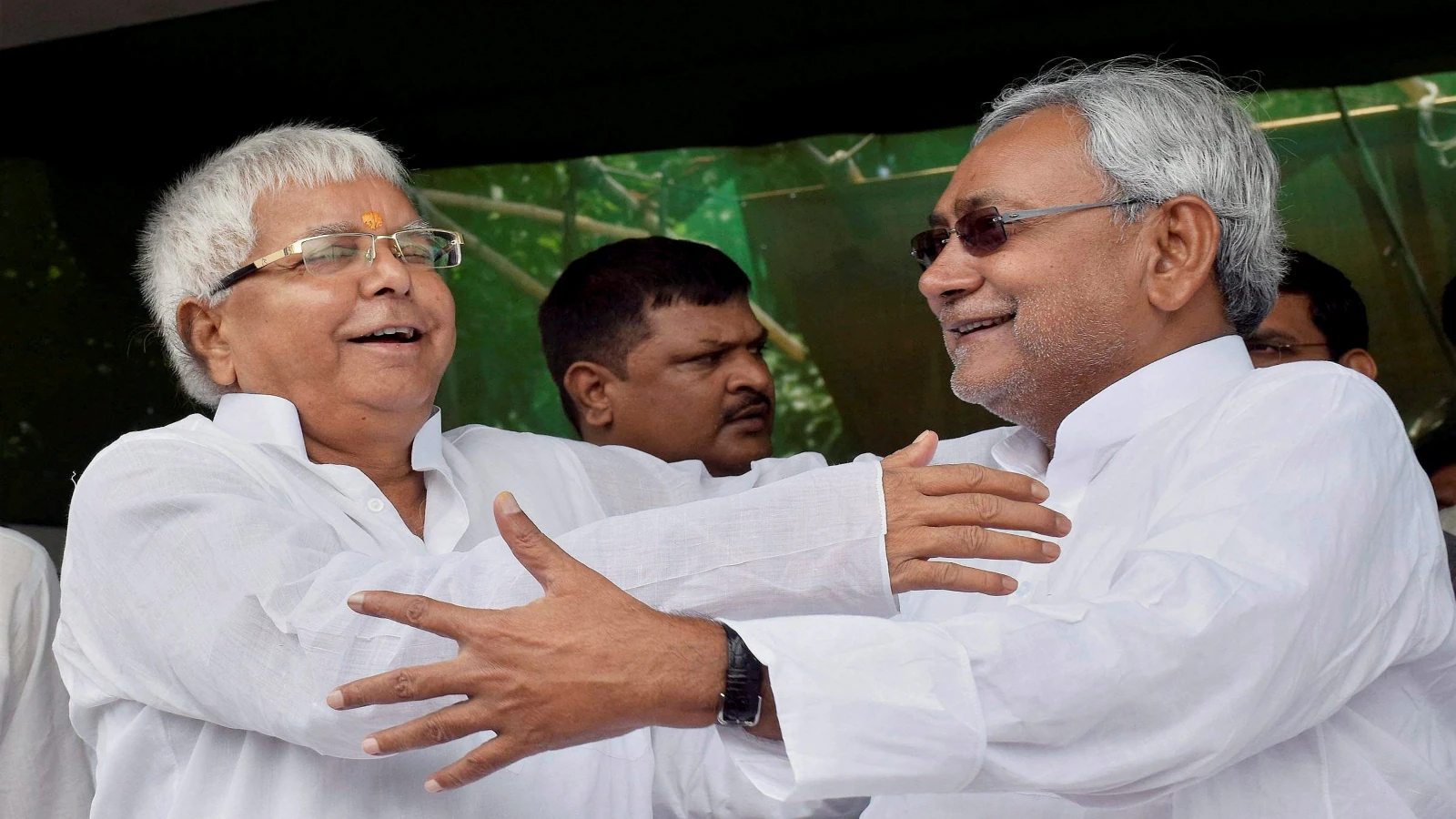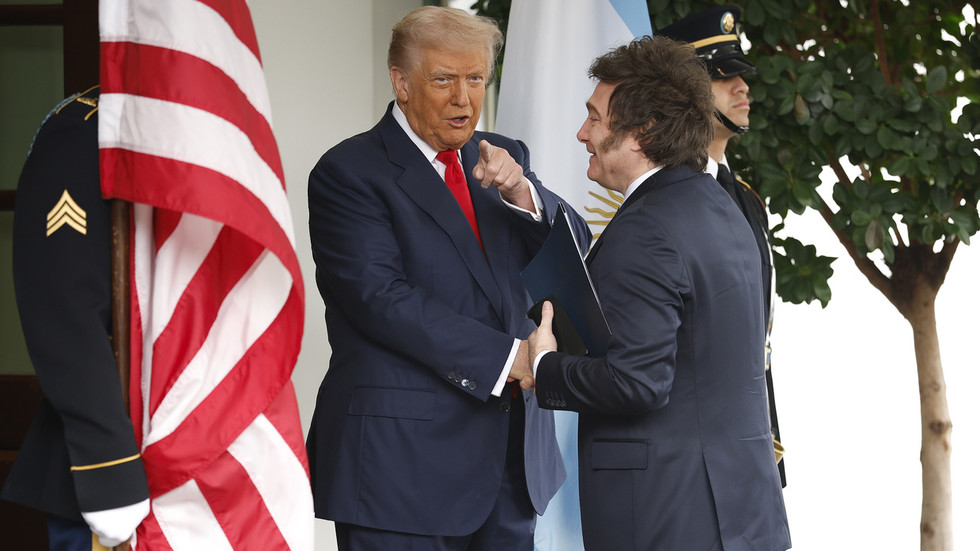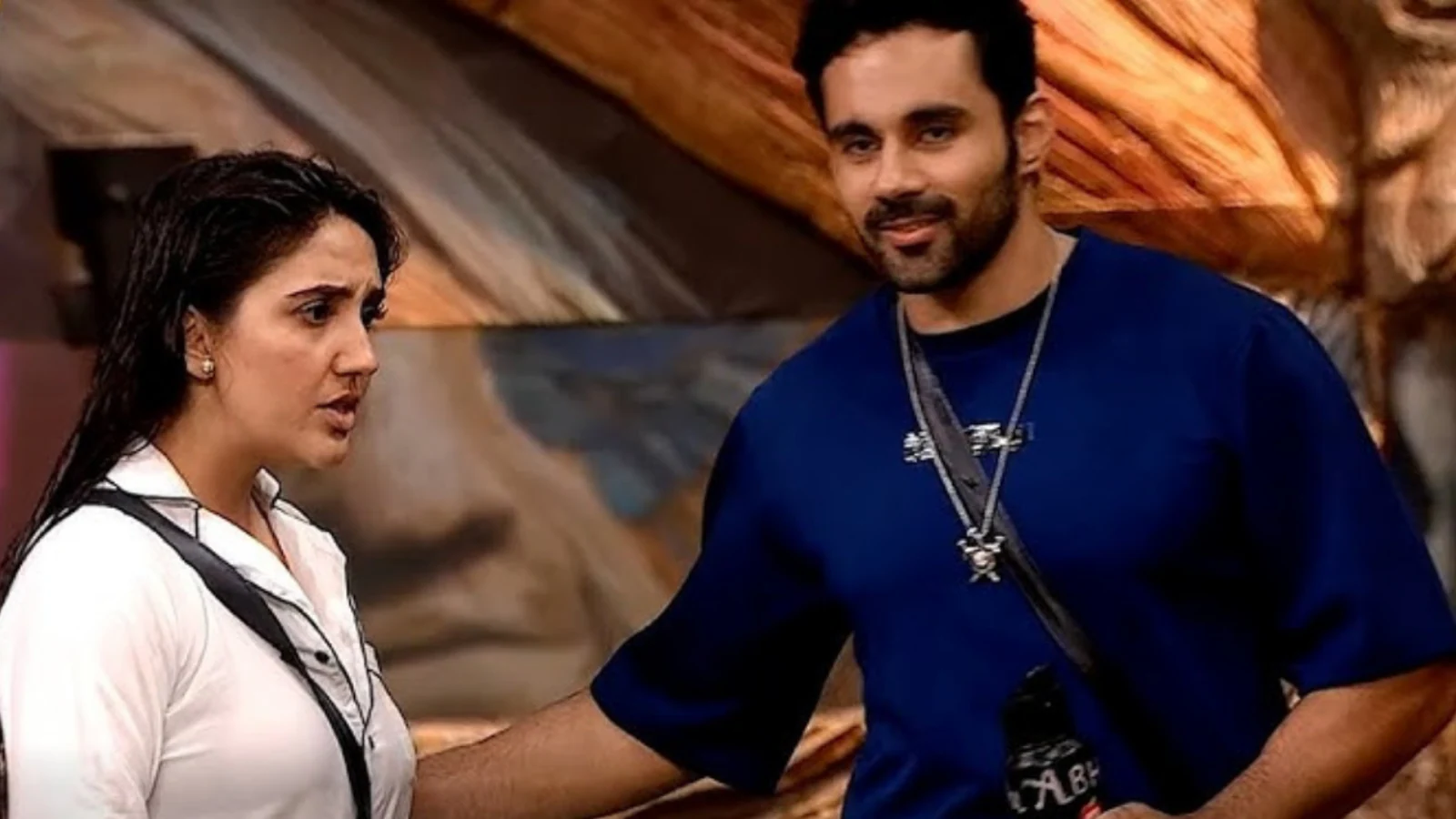Copyright news18

As Bihar heads into another election season, familiar themes return to the fore — caste justice, identity, and coalition politics. But beneath the shifting alliances lies a deeper continuity. The state’s politics still turns on a question that dates back half a century: will Bihar’s idea of justice be defined by samajwaad (socialism) or by Sanghwaad (Hindutva)? Half a century after the JP movement reshaped India’s democratic imagination, socialism remains Bihar’s political heartbeat. And at its centre stand two men whose lives mirror the ideology’s rise, transformation and survival — Lalu Prasad Yadav and Nitish Kumar. Bihar votes in two phases: November 6 (121 seats) and November 11 (122 seats), with counting on November 14. How Socialism Took Root In Bihar Bihar’s socialist tradition was born out of inequality. The Permanent Settlement of 1793 entrenched landlord power and turned peasants into tenants, linking caste to class. The early 20th century saw a series of agrarian movements, from Swami Sahajanand Saraswati’s Kisan Sabha to local peasant struggles, which connected economic exploitation to social hierarchy. By the 1950s, Ram Manohar Lohia’s call for samajik nyay (social justice) redefined socialism in Bihar’s context. It became less about Marxist class conflict and more about dignity, representation and equality. When Jayaprakash Narayan launched his “Total Revolution” in the 1970s, these strands came together in a moral and political movement that sought to remake Indian democracy through participation and justice. That movement produced a new generation of leaders — among them Lalu Prasad Yadav, Nitish Kumar, Ram Vilas Paswan and Sharad Yadav — who carried socialist politics from street protest to state power. The JP Movement And The Rise Of A Generation When Indira Gandhi declared the Emergency in 1975, Bihar became the epicentre of resistance. Lalu emerged as one of the movement’s most visible faces. Nitish Kumar worked behind the scenes drafting statements, coordinating meetings and explaining the movement’s aims to the media. Both absorbed JP’s ideals of equality and decentralisation. The 1977 election that followed the Emergency sent Lalu to Parliament from Chhapra, while Nitish, after successive defeats, finally entered the Bihar Assembly in 1985. Together, they represented two faces of the same political awakening — Lalu, the charismatic mobiliser who gave socialism its mass appeal, and Nitish, the organiser who sought to translate ideology into governance. Lalu’s Socialism: Empowerment Through Representation In 1989, when Lalu became Leader of the Opposition in the Bihar Assembly, Nitish not only backed him against senior contenders but also drafted his press notes. The two were part of a post-Congress generation built around the Janata Dal and the Mandal Commission’s message of OBC empowerment. When Lalu became Chief Minister in 1990, it marked a historic shift. His slogan “Bhurabal hatao” (remove the Bhumihars, Rajputs, Brahmins and Lalas) encapsulated decades of resentment among the backward classes. For the first time, Bihar’s administration reflected the accents, faces and priorities of those long excluded from power. His appeal lay in symbolism as much as substance. To his supporters, Lalu embodied the moment when marginalised communities stood upright. To his opponents, his long rule saw the decay of institutions and a rise in lawlessness, labelled “jungle raj” in the national conversation. But that very phrase, used by his critics, also reinforced the depth of the social change he had set in motion: the overthrow of the old order. Nitish’s Frustration And The Break In the winter of 1992 at Bihar Bhawan in Delhi, a meeting turned into a showdown. Lalu shouted, “Pakadke phenk do bahar,” at Nitish’s aides; walking out, Nitish said, “Ab saath chal paana mushkil hai.” Sharad Yadav then tried to broker peace. Lalu agreed to apologise; Nitish declined, and the rift held. In a letter written soon after, Nitish accused Lalu of surrounding himself with loyalists and taking credit for collective decisions, including the arrest of L.K. Advani during the Ram Rath Yatra. Their differences, between representation and reform, populism and administration, had become irreconcilable. The split became formal in February 1994 when Nitish addressed a Kurmi Chetna Rally in Patna and declared, “Bheekh nahin hissedari chahiye.” Within a year, he had launched the Samata Party, completing Bihar’s most significant political separation since the Emergency. Two Paths After The Split The distance only grew as Lalu’s fodder-scam conviction became a political watershed. Through the 1990s, he remained Bihar’s dominant figure, even as allegations of corruption and misrule mounted. Nitish focused on building an alternative rooted in governance and administrative competence. He allied with the BJP in 1996, not on ideology but on arithmetic. The partnership strengthened his position, and in 2005, the JD(U)-BJP alliance came to power, ending 15 years of RJD rule. Nitish’s slogan “Nyay ke saath vikas” (development with justice) captured his vision — to modernise socialism through delivery and reform rather than rhetoric. For a decade, his image as “Susashan Babu” symbolised stability and governance in a state long associated with decline. Roads, education and healthcare improved, and women’s participation in local governance expanded. In 2015, the RJD–JD(U)–Congress Mahagathbandhan won 178 of 243 seats; RJD emerged as the largest party but Lalu ceded the chief ministership to Nitish. Yet Nitish’s alliance with the BJP also brought an ideological dilemma. Hindutva’s emphasis on religious unity sat uneasily with the caste-based social justice that underpinned Nitish’s own politics. Every alliance and rupture that followed — 2013, 2015, 2017, 2022 and 2024 — reflected this contradiction. Mandal And Mandir: Bihar’s Enduring Ideological Divide Since the 1990s, Bihar’s politics has revolved around two competing ideas — Mandal and Mandir. The Mandal era, shaped by leaders such as Lalu Prasad Yadav, turned caste justice into the organising principle of politics. It brought the backward classes, Dalits and minorities into the heart of power through the OBC reservation framework. The Mandir movement, led by the Sangh Parivar and the BJP, built its appeal on a different kind of unity — religious identity. For many upper-caste Hindus unsettled by Mandal-era assertions, Hindutva became the counter-narrative, promising cohesion through faith rather than caste. Over time, however, the BJP recognised that Bihar could not be won through a purely religious pitch. Caste arithmetic still drives voting patterns, and social justice remains a moral vocabulary that no party can ignore. The JD(U)-BJP alliance that came to power in 2005 was, in many ways, an experiment in reconciling two ideologies — the BJP’s cultural nationalism and Nitish Kumar’s backward-caste inclusiveness. Two decades later, that balancing act continues. In the ongoing 2025 Bihar Assembly campaign, the BJP has tried to show that Hindutva and Mandal can coexist. It has publicly backed caste enumeration, a move once championed only by socialist parties, after the Union cabinet approved and notified the inclusion of caste data in the upcoming national census. This allows the party to say it supports caste-based policy without ceding moral ground to its opponents. Its candidate list reflects this repositioning. The BJP has fielded 49 upper-caste, 40 backward-caste and 12 Dalit candidates. Its ally JD(U) has given tickets to four Muslims, Chirag Paswan’s party to one, while the Opposition grand alliance — led by RJD and Congress — has 28 Muslim candidates (18 from RJD and 10 from Congress). This is part of a broader strategy shaped over the past year. The BJP and the RSS have run a coordinated organisational campaign across Bihar. RSS chief Mohan Bhagwat has reiterated that the Sangh supports caste-based reservations, an attempt to reassure OBC and Dalit voters who once viewed the party as upper-caste dominated. At the same time, the BJP has reshaped its own leadership in Bihar. Some upper-caste heavyweights have been pushed to the background, while new OBC faces have been brought to the fore — deputy chief minister Samrat Choudhary, state BJP president Dilip Jaiswal, and Union minister Dharmendra Pradhan, who oversees the Bihar campaign, all come from backward communities. The party has also inducted Bhojpuri actor-politician Pawan Singh to appeal to younger voters and curbed dissent among senior Rajput leaders. But the contradiction has never fully disappeared. Nitish’s survival depends on maintaining the caste balance that Mandal politics created, while the BJP’s ideological project seeks to transcend those divisions. Every time Nitish changes sides, it is this tension, not mere opportunism, that drives Bihar’s churn. The Changing Face Of Socialism By the 2010s, both Lalu and Nitish had come to represent different versions of socialism. Lalu’s politics, rooted in caste identity, had lost administrative credibility but retained emotional appeal. Nitish’s politics, based on governance, had widened his reach but diluted ideological purity. After snapping ties with the BJP in 2013 over Narendra Modi’s projection as the NDA’s face, JD(U) crashed to two Lok Sabha seats in 2014. Two years later, he joined hands with Lalu and the Congress to form the Mahagathbandhan, which won the 2015 Assembly polls convincingly. The reunion was short-lived. Allegations of corruption involving Lalu’s family led Nitish to exit the alliance in 2017 and rejoin the NDA. In 2022, he left the BJP again, only to return by early 2024. When Lalu publicly invited him back to the opposition INDIA bloc in January 2025, Nitish declined, calling his earlier partnership with Lalu “a mistake.” Their careers, once intertwined, had become parallel symbols of Bihar’s fractured socialism — one emotional, the other technocratic. Generational Change And The Future Of Bihar’s Socialism As Bihar heads into the 2025 election, the generation forged by the JP movement is in its twilight. Lalu’s son Tejashwi Yadav now leads the RJD, campaigning on employment and renewed social justice. Nitish remains Chief Minister but faces questions about his political fatigue and repeated alliance shifts. This is also the first Bihar election where many veterans of the JP era are either gone or receding. Sushil Modi and Ram Vilas Paswan are no longer alive; JP-generation faces like Ravi Shankar Prasad and Ashwini Kumar Choubey have taken a back seat, while the BJP projects leaders such as Samrat Choudhary and Vijay Kumar Sinha. Outside the two main camps, figures like Prashant Kishor and Chirag Paswan pitch development to younger voters. Bihar’s electorate has changed too. Nearly 58 per cent of its voters are under 35. For them, socialism is less a movement and more a memory, yet caste remains central to everyday life. Economic aspiration now blends with identity, creating a new kind of political conversation where social justice competes with development. Tejashwi has tried to frame the RJD legacy as social justice with development. The BJP, meanwhile, has integrated backward-caste outreach into its broader Hindutva campaign, while Nitish continues to position himself as the middle path between ideology and governance. What Socialism Means In Bihar Today Despite shifts in alliances and vocabulary, socialism remains Bihar’s political and moral language. Every major party borrows its idiom, of equality, justice and representation, even when pursuing different goals. Lalu embodies its original spirit of defiance and empowerment. Nitish represents its administrative reform, translating moral ideals into governance. The BJP represents its adaptation to new realities, merging inclusion with a wider cultural narrative. Five decades after Jayaprakash Narayan’s “Total Revolution,” Bihar’s politics continues to argue with itself — between justice and faith, caste and community, identity and aspiration. The actors have changed, the slogans have evolved, but the state’s central debate endures. As the next campaign gathers pace, Bihar’s voters will once again decide not just who governs, but which idea does — samajwaad or Sanghwaad, representation or consolidation.



